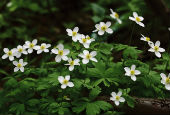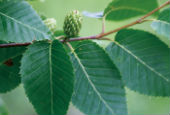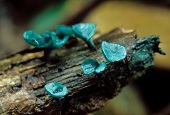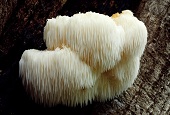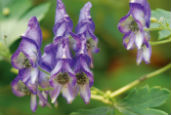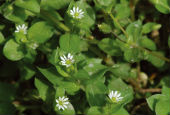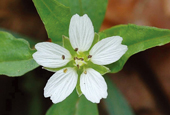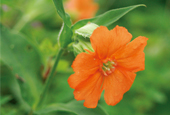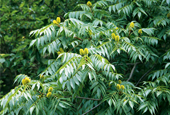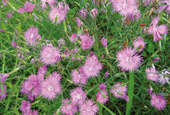View this article in another language
- 한국어
- English
- 日本語
- 中文
- العربية
- Español
- Français
- Deutsch
- Pусский
- Tiếng Việt
- Indonesian
Flora & Fauna of Korea #24
Korea.net publishes a series of articles, “Nature You Meet in the Mountains,” about the peninsula’s mushrooms, insects, trees and herbs & flowers.
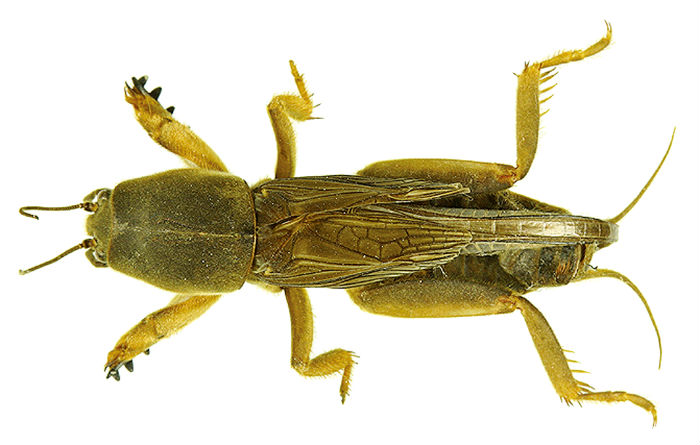
Insects
Name: 땅강아지, Ddanggangaji
Scientific name: Gryllotalpa orientalis (Burmeister)
Distribution: Korea, Japan, Taiwan, New Zealand, Australia
The mole cricket is about 30 to 35 millimeters long. It is yellowish brown or blackish brown. The whole body is covered with small hairs that feel like cotton. The forelegs are strong and wide, designed for digging. It digs like a mole. The anterior wings are small, while the hind wings are large. When at rest, the wings are placed on the back, appearing to be long and slender. Along the middle of the forewings, females have horizontal veins, while the males have a slight venation.
Ecology: The mole cricket appears only once per year. It likes to live underground in damp soil. Normally, it builds a nesting chamber deep in the soil and lays about 200 to 350 eggs. The newly hatched nymphs remain underground in their nest for a certain period of time, eating the egg shell. After a while, they remain near to their hatching site, burrowing 10 to 30 centimeters into the soil. Adults are active in the nighttime. They begin to take flight in the evenings for two to three hours after sundown.
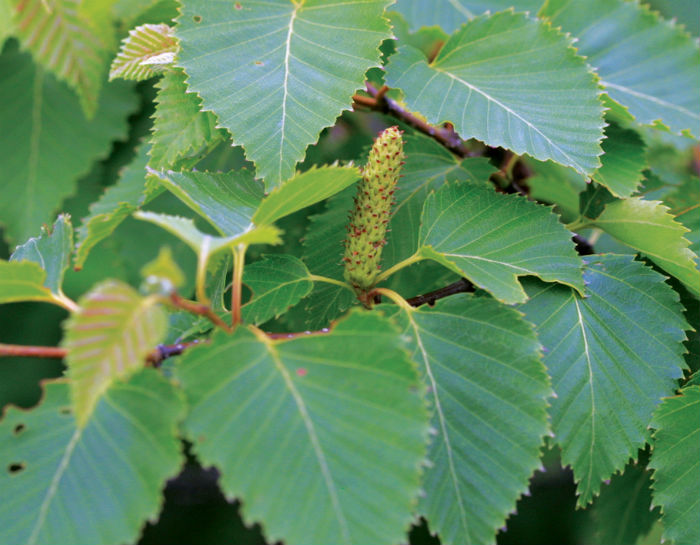
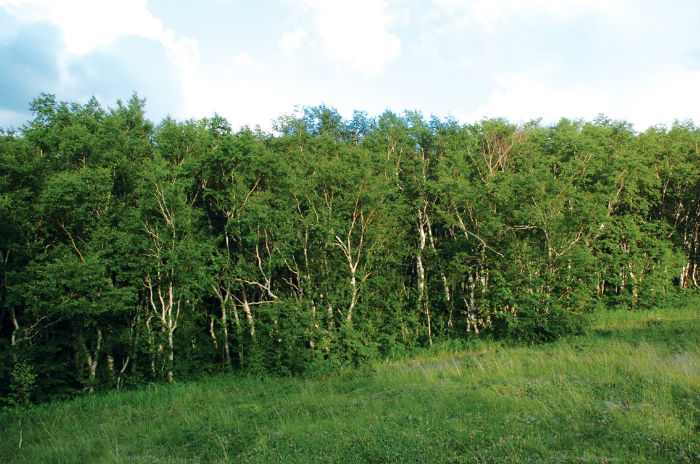
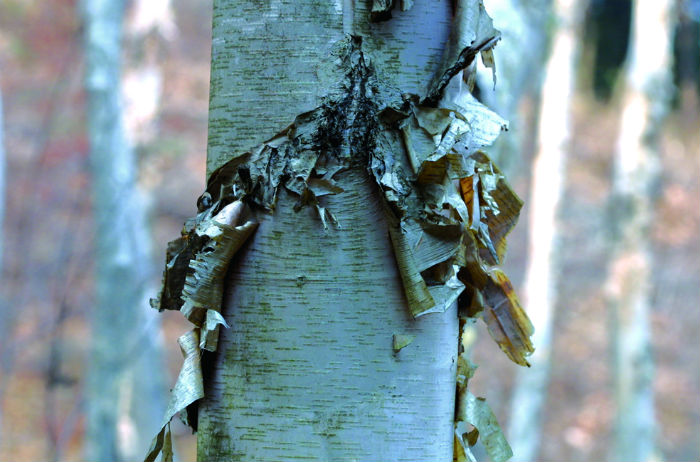
Trees
Name: 사스래나무, Saseuraenamu
Scientific name: Betula ermanii Cham.
Type: deciduous broadleaf shrub
Blooming season: May to June
Bearing season: September to October
Distribution: Along the Baekdudaegan Mountains
This birch grows along the Baekdudaegan Mountains and stands 7 to 8 meters tall. The alpine plant has grayish-reddish-brown or grayish white bark. The tree is known for its peeling bark which hangs from the trunk or under the branches. The leaves alternate and look like a round triangle with an end that becomes narrower. It has a saw-teeth edge and fine hairs along the vein on the underside of the leaves. This monoecious tree has oval- or egg-shaped pine cones.
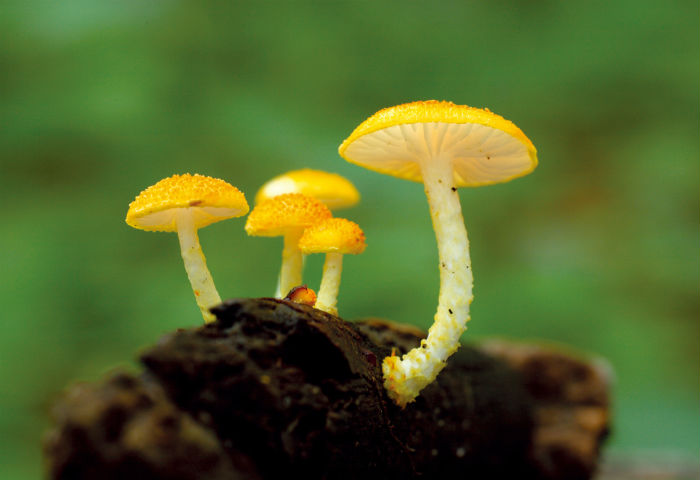
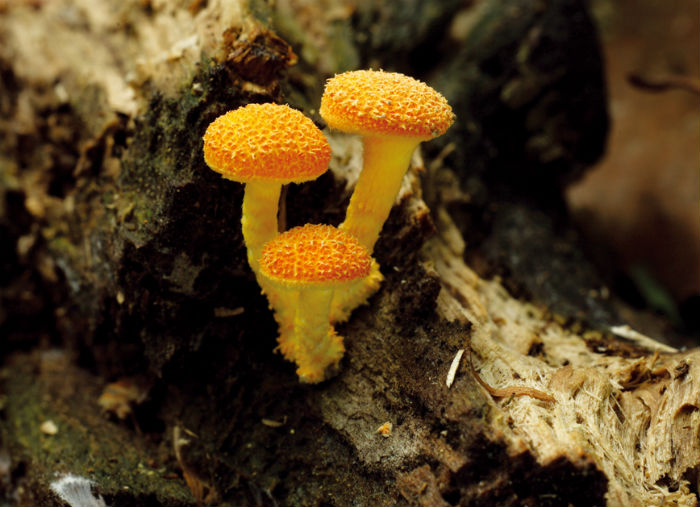
Mushrooms
Name: 비녀버섯, Binyeobeoseot
Scientific name: Cyptotrama asprata (Berk.) Redhead & Ginns
Type: saprophile spore
Print: white
Inedible
Commonly known as the Golden-scruffy Collybia, this mushroom grows from decaying conifer wood. The cap is about 1 to 3 centimeters across, convex and cushion-shaped. It is a colorful mushroom, covered with densely arranged orange spikes that look like soft hairs sticking out of its Mars-yellow cap. The gills are white and distantly spaced, and have either an adnate or short decurrent attachment that runs the length of the stem. The stem is 1.5 to 5 centimeters long and 2 to 4 millimeters across, and looks woolly or hairy. The surface of the stem, especially toward the base, is scaly, covered with small particles. It is also thicker toward the base.
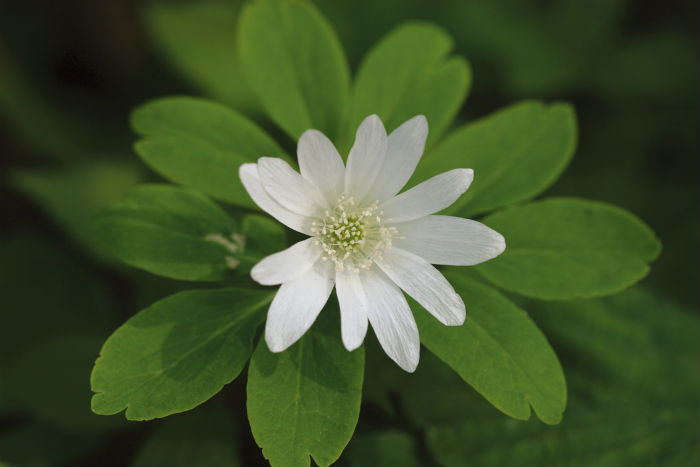
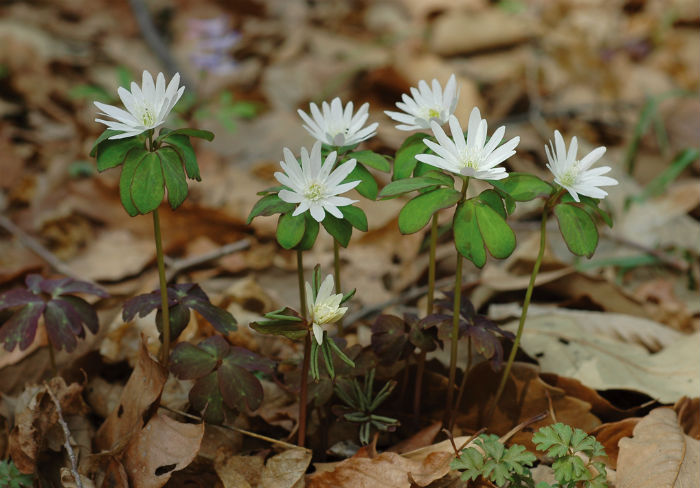
Herbs & Flowers
Name: 꿩의바람꽃, Ggeongeo baramggot
Scientific name: Anemone raddeana Regel
Bearing season: April to May
Distribution: mountains along the central north regions in the peninsula
This perennial grows to a height of 10 to 20 centimeters. When the flower falls, a basal leaf grows with tripinnate leaves, separated into two to three petals. It gives bloom to a white flower at the tip of the branch that closes at night. It is about 3 to 4 centimeters wide. It has 8 to 13 sepals. It bears akene fruit that ripens into a tail shape each May.
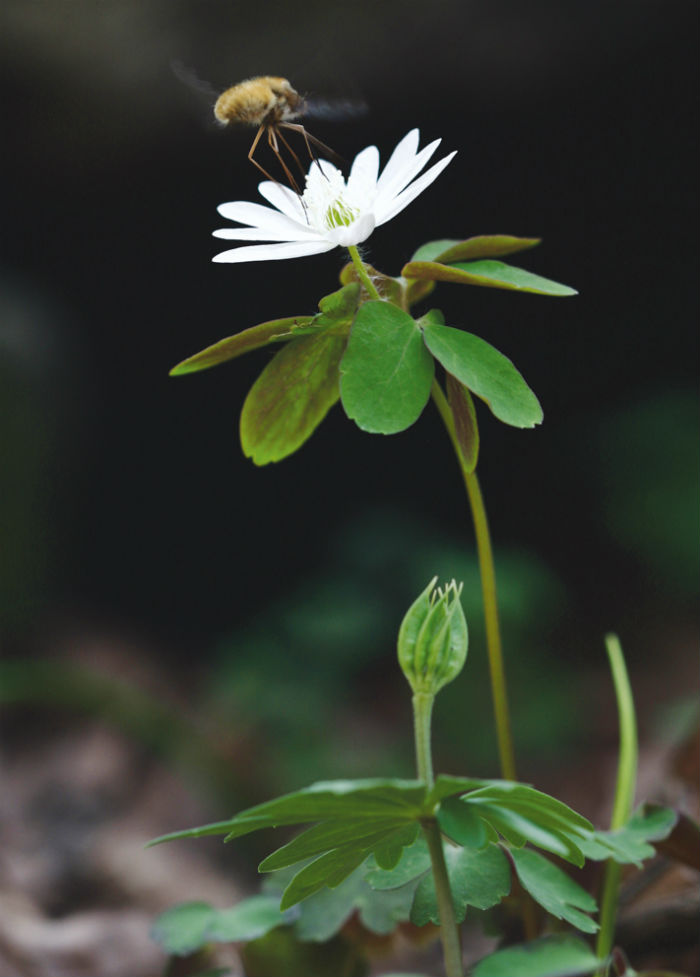
*This series of article about Korea’s insects, trees, mushrooms and herbs & flowers has been made possible through the cooperation of the Korea National Arboretum.
Korea.net publishes a series of articles, “Nature You Meet in the Mountains,” about the peninsula’s mushrooms, insects, trees and herbs & flowers.

Insects
Name: 땅강아지, Ddanggangaji
Scientific name: Gryllotalpa orientalis (Burmeister)
Distribution: Korea, Japan, Taiwan, New Zealand, Australia
The mole cricket is about 30 to 35 millimeters long. It is yellowish brown or blackish brown. The whole body is covered with small hairs that feel like cotton. The forelegs are strong and wide, designed for digging. It digs like a mole. The anterior wings are small, while the hind wings are large. When at rest, the wings are placed on the back, appearing to be long and slender. Along the middle of the forewings, females have horizontal veins, while the males have a slight venation.
Ecology: The mole cricket appears only once per year. It likes to live underground in damp soil. Normally, it builds a nesting chamber deep in the soil and lays about 200 to 350 eggs. The newly hatched nymphs remain underground in their nest for a certain period of time, eating the egg shell. After a while, they remain near to their hatching site, burrowing 10 to 30 centimeters into the soil. Adults are active in the nighttime. They begin to take flight in the evenings for two to three hours after sundown.



Trees
Name: 사스래나무, Saseuraenamu
Scientific name: Betula ermanii Cham.
Type: deciduous broadleaf shrub
Blooming season: May to June
Bearing season: September to October
Distribution: Along the Baekdudaegan Mountains
This birch grows along the Baekdudaegan Mountains and stands 7 to 8 meters tall. The alpine plant has grayish-reddish-brown or grayish white bark. The tree is known for its peeling bark which hangs from the trunk or under the branches. The leaves alternate and look like a round triangle with an end that becomes narrower. It has a saw-teeth edge and fine hairs along the vein on the underside of the leaves. This monoecious tree has oval- or egg-shaped pine cones.


Mushrooms
Name: 비녀버섯, Binyeobeoseot
Scientific name: Cyptotrama asprata (Berk.) Redhead & Ginns
Type: saprophile spore
Print: white
Inedible
Commonly known as the Golden-scruffy Collybia, this mushroom grows from decaying conifer wood. The cap is about 1 to 3 centimeters across, convex and cushion-shaped. It is a colorful mushroom, covered with densely arranged orange spikes that look like soft hairs sticking out of its Mars-yellow cap. The gills are white and distantly spaced, and have either an adnate or short decurrent attachment that runs the length of the stem. The stem is 1.5 to 5 centimeters long and 2 to 4 millimeters across, and looks woolly or hairy. The surface of the stem, especially toward the base, is scaly, covered with small particles. It is also thicker toward the base.


Herbs & Flowers
Name: 꿩의바람꽃, Ggeongeo baramggot
Scientific name: Anemone raddeana Regel
Bearing season: April to May
Distribution: mountains along the central north regions in the peninsula
This perennial grows to a height of 10 to 20 centimeters. When the flower falls, a basal leaf grows with tripinnate leaves, separated into two to three petals. It gives bloom to a white flower at the tip of the branch that closes at night. It is about 3 to 4 centimeters wide. It has 8 to 13 sepals. It bears akene fruit that ripens into a tail shape each May.

*This series of article about Korea’s insects, trees, mushrooms and herbs & flowers has been made possible through the cooperation of the Korea National Arboretum.
